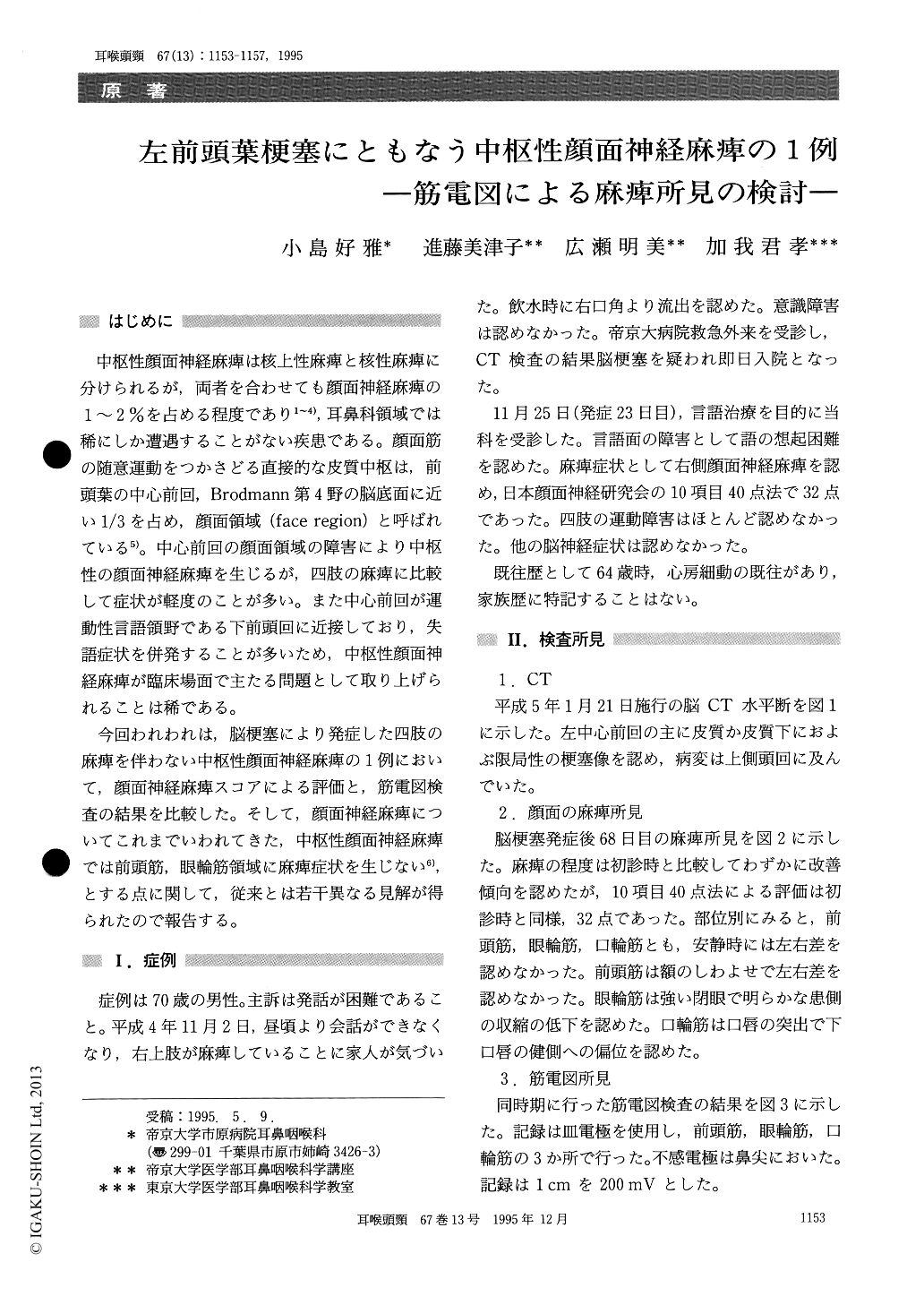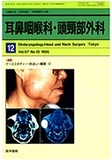Japanese
English
- 有料閲覧
- Abstract 文献概要
- 1ページ目 Look Inside
はじめに
中枢性顔面神経麻痺は核上性麻痺と核性麻痺に分けられるが,両者を合わせても顔面神経麻痺の1〜2%を占める程度であり1〜4),耳鼻科領域では稀にしか遭遇することがない疾患である。顔面筋の随意運動をつかさどる直接的な皮質中枢は,前頭葉の中心前回,Brodmann第4野の脳底面に近い1/3を占め,顔面領域(face region)と呼ばれている5)。中心前回の顔面領域の障害により中枢性の顔面神経麻痺を生じるが,四肢の麻痺に比較して症状が軽度のことが多い。また中心前回が運動性言語領野である下前頭回に近接しており,失語症状を併発することが多いため,中枢性顔面神経麻痺が臨床場面で主たる問題として取り上げられることは稀である。
今回われわれは,脳梗塞により発症した四肢の麻痺を伴わない中枢性顔面神経麻痺の1例において,顔面神経麻痺スコアによる評価と,筋電図検査の結果を比較した。そして,顔面神経麻痺についてこれまでいわれてきた,中枢性顔面神経麻痺では前頭筋,眼輪筋領域に麻痺症状を生じない6),とする点に関して,従来とは若干異なる見解が得られたので報告する。
A 70-year-old male showed a localized infarction image in the left precentral gyrus and a part of the superior temporal gyrus on CT. The contraction of the orbicularis oculi muscle was decreased during tight eye closure compared with the normal side. During lip protrusion, the lower lip was slightly de-viated toward the normal side. Electromyography revealed a slight decrease in spontaneous discharge in the frontal belly on the right side compared with the normal side. The most remarkable right-and-left difference was observed in the orbicularis oculi muscle with a definite decrease in the spontaneous discharge on the right side. The orbicularis oris muscle showed the least right-and-left difference.
In central facial paralysis, right-and-left differ-ences were also observed in the frontal belly and the orbicularis oculi on electromyograms. Findings on electromyograms were not always consistent with macroscopic findings. The degree of paralysis was slight in our patient.

Copyright © 1995, Igaku-Shoin Ltd. All rights reserved.


